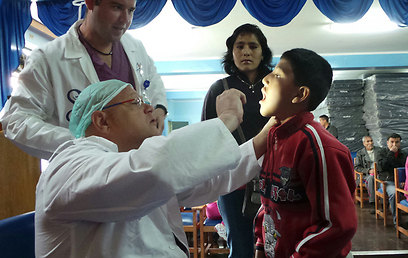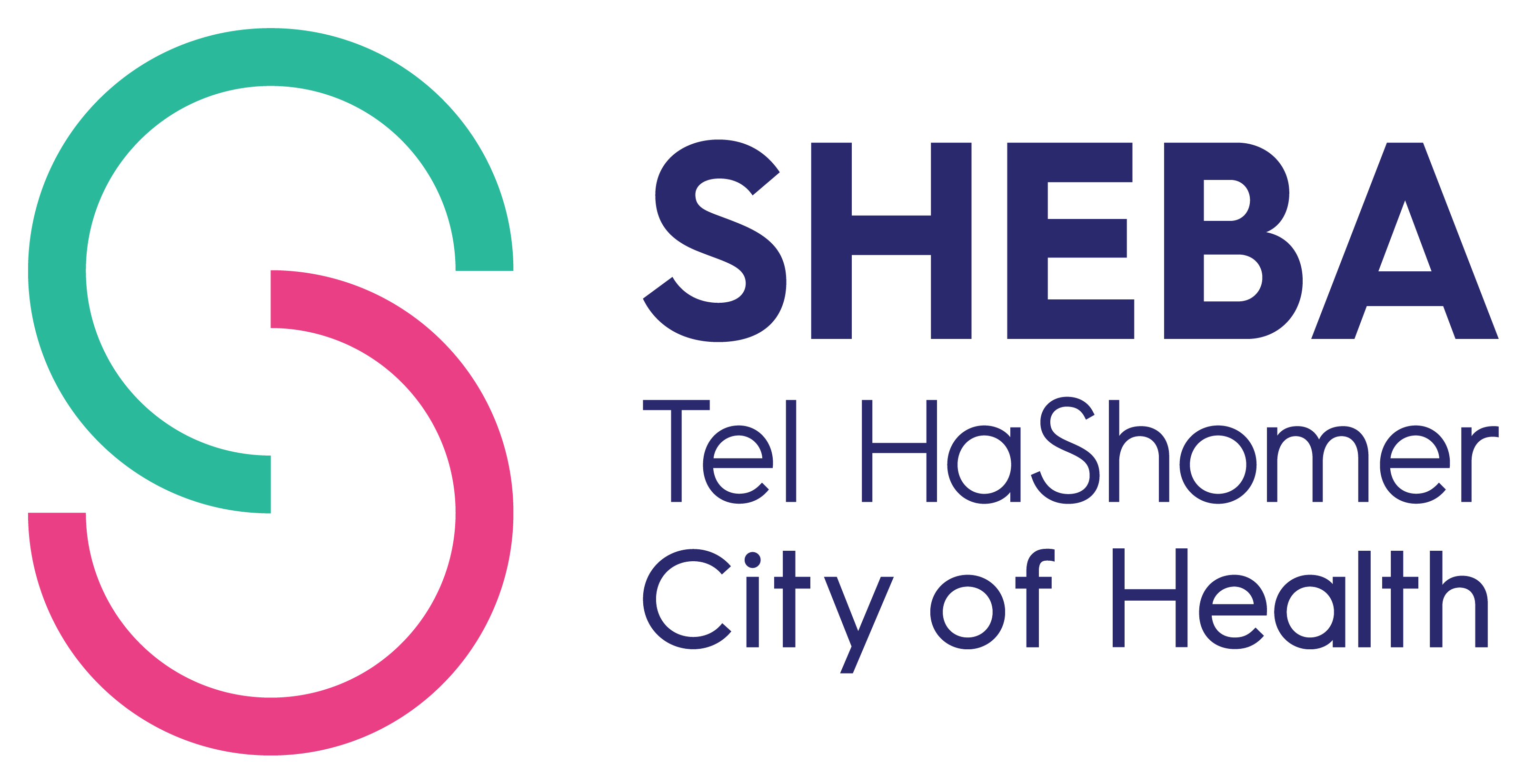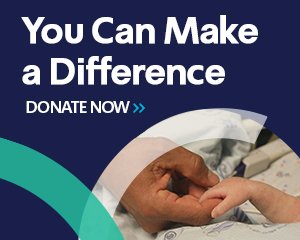The Israeli Team in Peru: This is how they decide on which child to operate -Part 2
Part 2 of a five-part series Ynet. Translated from Hebrew

The triage begins: Each child in turn is checked up by Dr. Winkler, which will determine if this child is suitable for surgery. At the same time, little Percy with burns all over his body is being operated on - and the medical team from Israel will give him back the ability to walk. Doron Cooperstein reports from the doctors' delegation in Peru.
.
"Just don't call it selection"' asks Dr. Winkler. However, there is no other way to describe the process which is taking place right now in the tiny auditorium, adjacent to the entrance to the Cusco Central Hospital in Peru.
A few dozen mothers are waiting patiently with their children to be called to the stage where Dr. Winkler and Dr. Alejandro Medina, a resident surgeon from Israel, a member of Dr. Winkler's team, have set up shop. Originally from Mexico, Dr. Medina doubles as a translator, and together they meet the mothers and the children and decide who is suitable for surgery and who is not.
These people have heard about the visiting doctors from Israel on TV and on the radio over the last few days, and the rumor has spread. They are all very excited. It's not every day that they are offered such surgery, free of charge, without waiting for months on end, not to mention at this high level of performance.
The sorting criteria are only a few. "First and foremost the surgery must benefit the patient," Winkler explains. Then there is the issue of allocation of resources, and the third criterion is what surgery can be performed with a reasonable and minimal amount of risk. These children have fever diseases and other maladies, and this too is taken into account.
"A child arrived today with a huge hole at the roof of her mouth which allows food to run out of her nose. I will not perform this surgery because it is impossible to do under the existing conditions. This is a surgery which causes massive bleeding and the bleeding alone might cause the death of the child".
It is best for us to concentrate our efforts on cleft lip and palate surgeries. These are surgeries that rarely get infected due to the ample blood supply to the operated area. We perform these procedures quickly and the results are amazing."
"In Israel we rarely see these problems, because this condition is easy to diagnose in a routine ultrasound check when the fetus is only six weeks old. You can see clearly that the lips do not bind together. The doctor then notifies the parents that he cannot rule out sever retardation or damage to the brain, and most of the parents know to make the decision."
Before the sorting process begins, three local TV reporters are asking to interview Winkler. They each ask questions in turn, but somehow, all the questions end up revolving around one issue: Who is financing this operation?
Local reporters find it hard to believe. A surgeon from a distant country called Israel decides to fly half the world over, together with four other doctors and a nurse, arrive here and operate on children, as many as they can within their allocated time, free of charge. Somehow, they do not seem convinced.
The children go on the stage, one by one, each child with his own medical challenge. The kids with cleft lips, which is the most noticeable condition, are the ones with the best chances to recover. The surgery performed by the Israeli team will bring their lips back together.
The deepest clefts, which sometimes do not look so bad from the outside, can be very complex and risky to operate upon. Some clefts might reach so deep that the back of the airway passages and the vocal cords can be seen through the mouth. These cases, as mentioned, Winkler prefers not to take on.
Using the flashlight from his mobile phone, Winkler inspects the depth of the cleft and its severity. "Say Coca Cola" he asks each one of the children. Most of them cannot, and the best they can manage is OA OYA. This is a good way to determine how bad the cleft is and the effect it has on the child's life.
The parents who receive a positive answer, and whom their child is deemed suitable for surgery are ecstatic. They keep thanking the doctor from Israel with many "mucho much gracias" which they seem unable to stop saying, and a sparkle of hope lights us their eyes. If there are moments of grace in the Sisyphean screening process, these are those moments.
Meanwhile, on the other side of the hospital, Winkler's team from the Sheba Medical Center operates on little Percy Lisarazo, whom we met yesterday. The 13 years old was burned on over 50% of his body, with the worst burns on his legs and his face.
Having not received proper treatment immediately after the event, Percy is unable to walk, and moves around using an old cart with his legs twisted due to the pain generated by the walking motion.
"We cut the skin in the leg joints area," explains Dr. Ariel Tissona, "and allow the leg to move freely, something that was not possible until now. We then graft skin harvested from his back on the new holes. The graft should be catching within four to five days and then the bandages are removed."
The surgery goes on for several hours, during which the doctors realize that although Percy was promised a new face, this will not be possible to do. The unburned skin on parts of his body is much too thin for facial grafting, but at least he will be able to walk again.
In the early evening hours, the staff leaves the hospital. Tomorrow is another day with many cleft lip surgeries scheduled, and go back to the hotel to sleep to gather strength for tomorrow.









